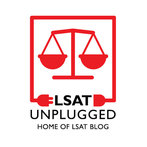 I recently read the Barron's LSAT prep book after Barron's asked me to update it for the next edition.
I recently read the Barron's LSAT prep book after Barron's asked me to update it for the next edition.Unfortunately, the book needs to be completely rewritten from cover to cover.
Most of the following book review is adapted from an email I sent to Barron's after reviewing the book.
In case anyone's wondering, I won't be updating the Barron's book, and I don't recommend that you use it.
(By the way, Barron's folks, I'm not ungrateful. I do appreciate the offer. It's just that you guys just aren't willing to go far enough in breaking out of the mold you've been using for the past several years.)
It appears that Barron's is trying to live off its reputation from many years ago. A few decades ago, Barron's was a big name in test prep.
Of course, this was back in the days when there were few test prep courses and competing books.
Test-takers often used the Barron's books exclusively when preparing for the New York State Regents exams and the SATs.
However, the rise of Kaplan and others the test prep market upped the standard of readiness for standardized tests.
This led to an accompanying increase in the sophistication of available test preparation materials.
I found that far too much space in the Barron's book is devoted to mock LSAT questions and their explanations.
Far too little space is devoted to appropriate strategies and techniques.
The questions, explanations, strategies, and techniques seemed virtually identical to those from previous editions of the book. Much of the book seemed geared to the pre-June 1991 LSAT. (LSAC gave the LSAT its modern format in June 1991.)
Barron's is stuck in the Stone Age.
LSAC has released over 60 actual LSAT exams.
There's no need to include hundreds upon hundreds of fake (non-LSAC-written) LSAT questions - unless, you want to puff up the book's page count (689).
The non-LSAC written questions in that book do not adequately represent real LSAT questions in the slightest. If you gave me a list of Barron's LSAT questions mixed with LSAC-written LSAT questions, I could easily tell you which were which (and that's not only because I've seen every LSAC-written LSAT question before).
When I told this to Barron's, they said they'd be happy to "let" me rewrite the questions.
I learned how long it takes to write LSAT questions from scratch when I wrote my own Logic Games. I don't feel like writing hundreds of LSAT questions from scratch when a publisher could just license the questions from LSAC.
***
Fake questions not realistic / modern, strategies lacking / not useful
Some question-types covered in the book don't appear on the modern LSAT at all.
-Take the sample questions from "Author Information or Author's Purpose" and "Word Reference." These just don't feel like real LSAT Logical Reasoning questions.
Additionally, some types of questions (and distinctions between types of questions) are left out altogether.
-Particularly, there is no distinction made between necessary assumption and sufficient assumption questions. These two question-types require significantly different analyses. The author lumps them together under "Assumptions..." and devotes only pages 101-105 to this question-type. Even worse, most of those few pages is devoted to sample questions and explanations rather than discussion of the question-type in general.
This common question-type deserves more attention in a 689-page book.
***
Exams included aren't new, despite the claims on the cover
The two real LSAT exams included in the Barron's book are very old - PrepTest 12 (October 1994) and PrepTest 14 (February 1995). These are not "two recently given LSATs" as the back cover states (unless you consider 15+ years ago to be recent). Nor are these exams the "most up-to-date review and practice tests currently available" (as the front cover states).
Every section of the LSAT has significantly evolved since that time - there are now 70+ released exams.
Most students reading the current edition of Barron's LSAT will eventually discover that the real (and modern) LSAT is much different from both the non-LSAC questions written by the author and from the older LSAT PrepTests included in the book.
Only someone who's brand-new to the LSAT would be happy with this book. It seems like Barron's is only looking to appeal to people who just buy it off the bookshelf without doing their homework.
***
To summarize, the book needs:
-A complete rewrite with regard to strategies. Like I said, there isn't much. It's also far too easy to see that this book was written decades ago for the older LSAT, which was also back when law school admissions wasn't nearly as competitive. This book might have been fine for the era before the test prep industry existed, but it's way behind the times in terms of detail.
-Significantly less space for sample questions and explanations.
-Significantly more space for drills and strategies.
-More real LSAT questions used throughout the book as examples.
-A few full-length real (and recent) exams at the end.
-No CD. The LSAT is a pencil-and-paper exam. There's no need to include a CD.


